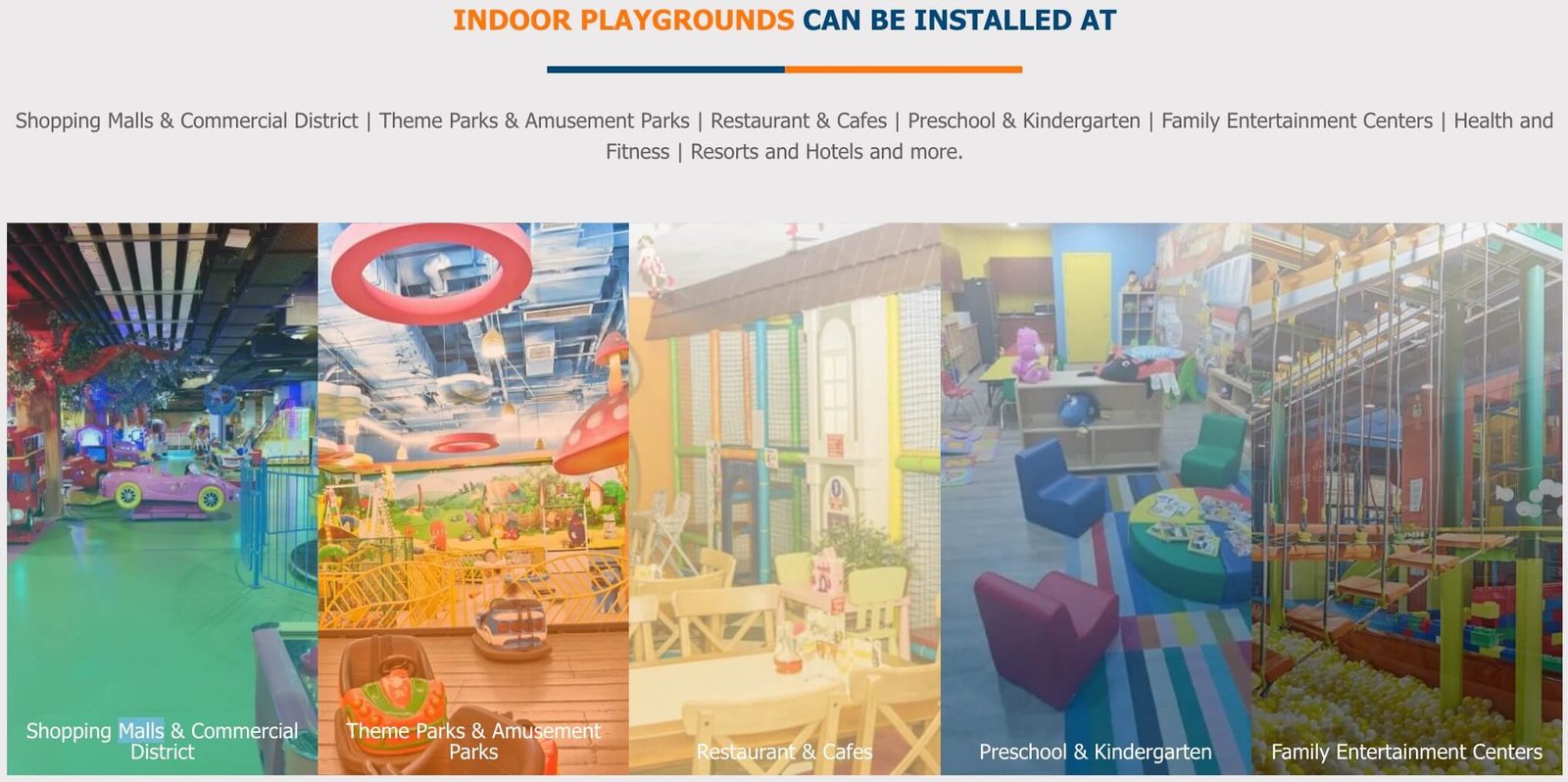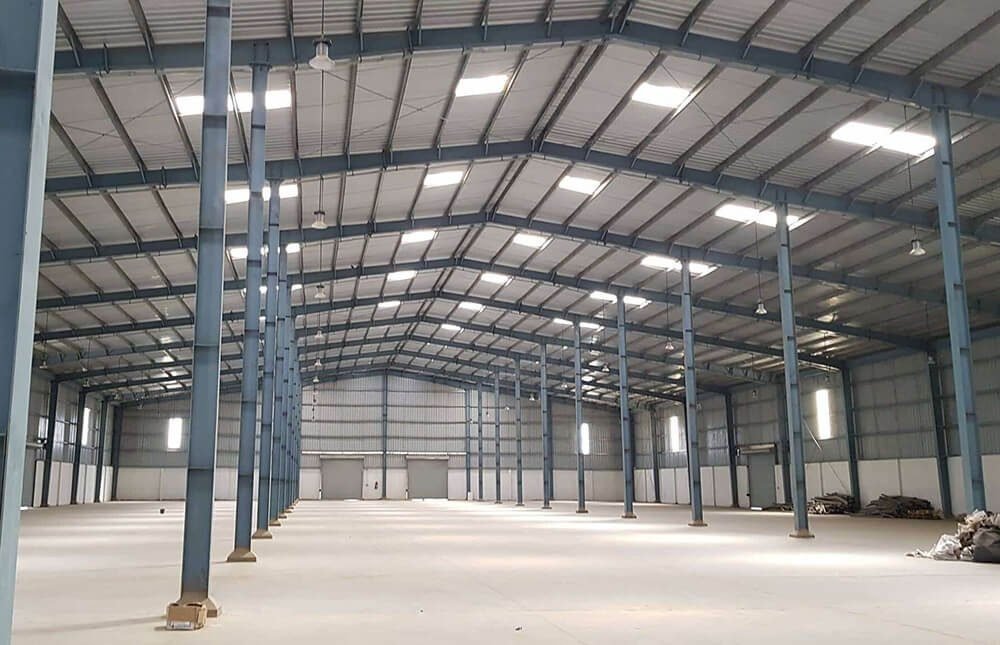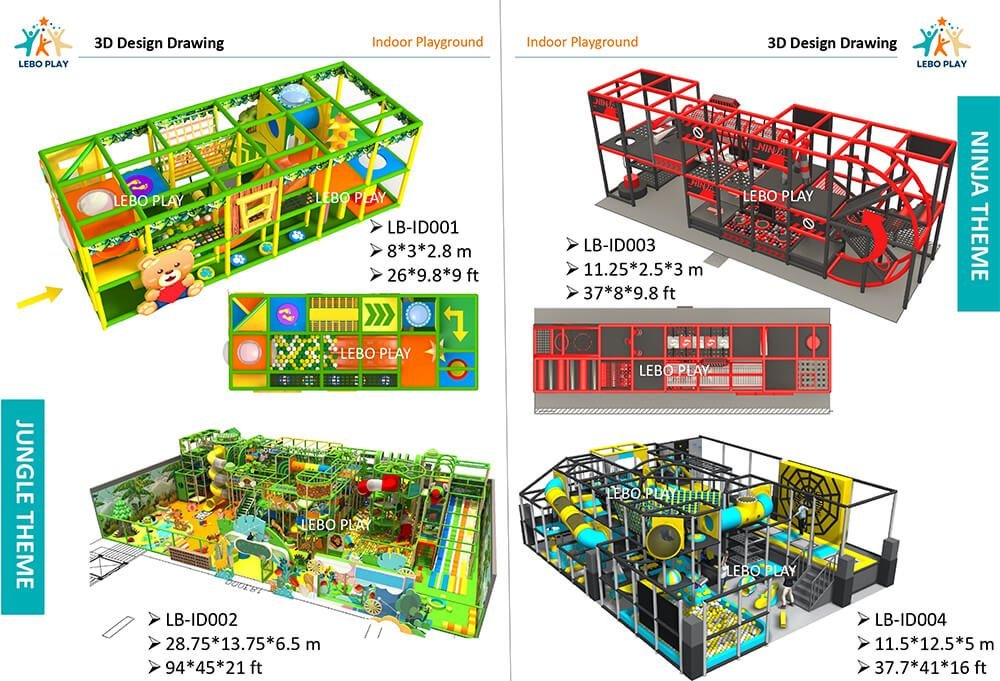When you’re planning an indoor playground, there’s a lot more to think about than just buying a few pieces of play equipment and setting them up. The choices you make today will impact the safety, customer satisfaction, and profitability of your business for years to come. By asking the right questions before you invest, you’ll not only avoid common pitfalls, but you’ll also make sure your indoor playground is a hit from day one. So, let’s dive into the 16 most important questions you need to ask.
1. What is Your Target Age Range?
This is one of the most important questions to ask when designing your indoor playground. Not all playground equipment is right for all age groups. For example, toddlers need softer and smaller play elements than older kids. Knowing the age range of your audience will help you pick the right equipment and make sure your playground is safe and fun for everyone.
- If you’re building a facility for kids who are 1-3 years old, you’ll want soft play areas, foam blocks, and gentle slides.
- If you’re building a facility for kids who are 5-12 years old, you’ll want more challenging play structures like chain or rope climbers, angular climbing, horizontal bars, spider tower, volcano slide, bigger and faster slides (with higher fall heights).
Always check the age recommendations for each playground component before you buy it.
Inside playgrounds are very customizable and can be built to fit a variety of budgets. Start-up costs can vary widely depending on a number of factors, such as the size of the playground, where you’re located, the equipment you buy, labor costs, marketing costs, etc.
When you’re ready to buy inside playground equipment, it’s important to get a quote from several suppliers so you can compare prices.
Site Rental
The cost of renting or purchasing a site based on the location, size, and condition of the building. For example, a small indoor playground in an existing building will cost less than a large family entertainment center in a new construction. In general, you can expect to pay between $2,000 and $10,000 per month in rent for a medium-sized indoor playground.
Equipment Costs
The cost of the playground equipment can range from a few thousand to tens of thousands of dollars depending on the quality, size, and complexity of the playground. For example, if you want a playground that’s 200m2, the cost will be around USD25,000 for two levels and around USD40,000 for three levels.
Shipping Costs
The shipping cost may vary depending on the size and weight of the play equipment and the distance from the country. The average shipping cost from China to the United States is $1150 to $3250 for a 20-ft container and $2150 to $4850 for a 40-ft container.
Installation Costs
Proper installation is critical to the safety of everyone who uses your playground equipment. If your play equipment comes in a variety of shapes and sizes, it’s wise to budget for professional installation service. Installation costs include travel, room and board, and wages for the installers.
Where you put your indoor playground is just as important as the equipment you use. You need to be in a place where a lot of people can see you and get to you easily. Shopping malls, supermarkets, and community centers are great places because people are always there. You can also put your playground near schools or places where kids go to help you get more customers. Also, think about how much room you have, the layout, and the height of the ceiling. You need enough room for play equipment and to make sure kids can play safely. That means you have to have enough room between play areas and emergency exits.

The size of your space will determine how many kids you can put in your indoor playground. For a small indoor playground, you need at least 100-200 square meters (1,076-2,152 square feet). This will allow you to put in some basic play structures, like slides, ball pits, and a soft play area. For a larger space or if you’re going to have more people, you need 300 square meters (3,229 square feet) or more. The larger space will allow you to put in bigger play structures, more zones, and make sure the playground doesn’t get too crowded, which can be unsafe and make your customers unhappy.

5. What Types of Play Experiences Do You Want to Provide?
Indoor playgrounds offer a wide variety of play experiences that help kids grow physically, mentally, and socially. Here are the main types of play experiences you might think about providing:
Physical Activity:
- Slide: A classic staple on any playground, slides come in all shapes and sizes. Climbing up helps children with balance, coordination and muscle development and then they get to slide down.
- Climbing Walls and Ladders: These structures challenge children physically and mentally. They help kids build upper body strength and problem-solving skills as they figure out how to climb to the top.
- Tunnels and Tubes: These elements encourage crawling and exploration. They help children with gross motor skills and allow for imaginative play.
Imaginative Play:
- Role-play Houses(Kids Mini Town): Designed for kids to pretend, these structures let kids play make-believe, encouraging kids to use their imagination and play with other children.
- Themed Environments: Creating themed areas (like a jungle or castle) can spur a child’s imagination, making the playground an exciting place for kids to explore and tell stories.
Interactive Features:
- Sensory Play: Adding things like water play, sandboxes and musical instruments can help children explore their senses and improve their fine motor skills.
- Games and Challenges: Fun games that involve working together or competing against each other can help children learn to get along with others and get their bodies moving.
When picking materials for an inside playground, you need to consider things like safety, durability, maintenance, and how it looks. Here are the main materials venue operators use:
Metal Components:
- Steel Tubes: Hot-dip galvanized steel tubes, ranging from 2.0mm to 3.25mm thick, provide strong support and resist rust, ensuring long-lasting durability.
- Connectors: Galvanized steel clamps that are welded by a robot and powder-coated are really strong and last a long time without rusting or breaking.
Platform:
- Plywood: 15 or 20mm thick plywood is used as the base for deck boards.
- Foam: High-density foam provides cushioning and safety.
- PVC Vinyl: Heavy-duty, 18oz industrial-grade PVC vinyl, 0.55mm thick and strengthened by 1000D nylon weaving, is used to wrap the deck boards.
Plastic Components:
- Plastic Tubes: Major plastic components are made from a high-impact compound resin that is very strong and lasts a long time without breaking.
Safety Protection Net:
- Polyester Netting: Quality polyester netting, available in multiple colors, is lightweight, water-resistant, and fire-resistant.
- Anti-Climb Netting: Used in areas where kids might climb, this netting keeps kids safe. Generally used in the first floor.


Make sure to ask your supplier about the materials they use in their equipment and make sure they meet international safety standards like ASTM, TUV, EN71, and CE.
All inside playground equipment is going to require some level of maintenance, and you need to consider that in your budget and staffing. You should conduct regular inspections to look for any wear and tear, and you should replace any broken or worn-out parts immediately to maintain your safety standards. You should also clean the equipment frequently to maintain hygiene, especially in ball pits and soft play areas. Also, think about whether your team will need additional training or resources to maintain the playground over time.
8. Are Replacement Parts Available?
Over time, parts of your inside playground are going to wear out and need to be replaced. Common items you’ll need to replace include ball pit balls, netting, slides, windows, pipes, hardware, and padding. You want to work with a supplier who has replacement parts readily available and has a robust post-purchase support system. Ask about replacement parts. Do they have them in stock? Do they have long lead times? This will help you keep your playground operational and safe for years to come.
At the same time, your staff can tell kids not to hang on the nets for their safety and to protect the structure from damage. When staff is vigilant, they can also quickly spot problems like damaged pads or nets and close off that portion of the playground until you replace the damaged part.
Safety is the number one thing you need to think about when you’re buying indoor playground equipment. You need to ask your supplier if their equipment meets international safety standards like ASTM, TUV, EN71, and CE certifications. These standards ensure that the equipment has been tested for safety, durability, and environmental impact. You should also ask for any additional safety features like non-toxic materials, fire-resistant coatings, and secure anchoring systems to give you more peace of mind.
The table below shows certifications with international regulations in the respective country.
| Country/Continent | International Standards |
|---|---|
| North America | ASTM F1918, UL94, CPSIA, NFPA701 |
| Europe | TUV, EN 71, EN 1176, EU REACH Regulation (EC) |
| Australia | AS3533.4.2-2013 |
| Canada | CSA Z614-07(R2012) |
10. How to Choose A Reliable Indoor Playground Supplier?
Picking the right supplier is going to make or break your playground business. You want to look for suppliers who have been in the industry for a long time and have a track record of successful installations. You should see if they have professional certifications or awards, and you should ask for customer testimonials or case studies from other projects they’ve done. A good supplier will also provide great customer service and support after the sale. They’ll help you with design, answer your questions, provide you with replacement parts, and help you with repairs.
Hope this indoor playground supplier list can help you.
11. Could I Get A Customized Design for Free?
For many indoor playgrounds, customization is key. You may want the inside playground equipment and layout to reflect your brand or your theme. Some suppliers offer free design services for smaller spaces, while larger projects may have a design fee. However, many suppliers will offset these fees if you place an official order with them. You should ask your supplier about their customization process, fees, and how involved you can be in the design stage. Having a playground that aligns with your vision will make your space stand out and appeal to your target audience.

12. What Is the Production Time If I Buy Indoor Playground Equipment From You?
Lead times can vary depending on the complexity of the playground and the capacity of the supplier. On average, it takes 20-35 days to produce your playground after you’ve finalized your design. You need to consider this when you’re planning your opening date. Make sure you ask your supplier for an estimated timeline and stay in contact with their sales team to make sure your project stays on track.
Installation is a huge part of getting your playground set up. Some suppliers provide professional installation services, while others just ship you the equipment and you’ve got to put it together yourself. You should ask about the installation process and whether you need a professional team or if your staff can handle it with clear instructions. You should also ask about installation costs and how long it takes.
14. How long does it take an indoor playground business owner to pay back?
The amount of time it takes to get your money back from an indoor playground business will depend on a few things, like your location, how big your place is, and how much you charge per ticket. Typically, you should plan on getting your money back in 1-2 years, but some people make money in the first year, especially if they have a good marketing strategy and they sell things like membership cards or birthday party packages. To make more money, you should put your playground in high-traffic locations, run good promotions, and have a good price point.
Typically, indoor playground equipment lasts anywhere from 5 to 15 years or longer. However, it depends on a few things, such as the quality of the materials, how much it’s used, how well it’s maintained, and the environment where it’s located. If you use commercial-grade materials and install your playground in an indoor environment, it will last longer. Also, if you build your playground to the safety standards of ASTM or EN1176, it will stand up to the rigors of high-traffic environments.
16. What warranties or guarantees are offered?
Warranties are a good sign of how confident your supplier is in the durability of their products. You should ask your supplier about the warranties they offer. You should find out what they cover (e.g., structure, paint, moving parts) and how long the warranty lasts. You should keep detailed records of all warranty information for future reference because you’ll need it if you have to get something fixed or replaced.
Conclusion
Buying indoor playground equipment is a big deal, but if you ask the right questions, you can make good decisions. Make sure safety, quality, and customer service are your top priorities, and work with good suppliers who will support you along the way. The answers to these 16 questions will help you make the right decisions and set you up for success in building a great indoor playground business.

